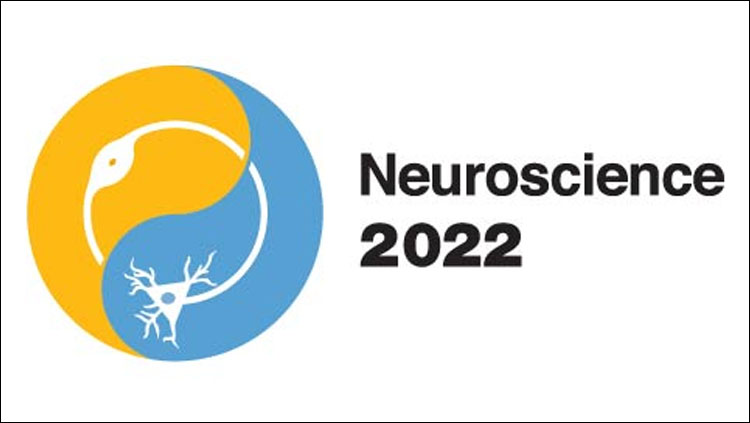Q&A: New JNeurosci Editor-in-Chief Sabine Kastner

Sabine Kastner
Sabine Kastner is professor of neuroscience & psychology at Princeton University and the new editor-in-chief of The Journal of Neuroscience. Sabine served JNeurosci as reviewing and senior editor from 2006–2016, followed by appointments as senior editor at eLife and editor-in-chief of Progress in Neurobiology. In her scientific work, she studies the neural basis of visual perception, attention and awareness in a multi-methods approach using several different models including the adult human and non-human primate brain, patients with brain lesions, and the developing brain. Her work has been recognized with several awards including the Young Investigator Award and George A. Miller Prize of the Cognitive Neuroscience Society. Sabine is an advocate for science outreach through her engagement with Frontiers for Young Minds and related initiatives that were recognized by the Society for Neuroscience Award in Education and Training. Sabine is an elected member of the Society of Experimental Psychology, the German National Academy of Sciences, and the American Academy of Arts and Sciences.
Neuroscience Quarterly (NQ): As the new editor-in-chief (EiC) of JNeurosci, what do you think sets the journal apart from its competitors in the neuroscience publishing space?
Sabine Kastner (SK): JNeurosci is a journal run by scientists for scientists. Our editors are all working scientists volunteering to serve our SfN members and the broader neuroscience community in publishing the best research representative of our field. The goal of our editorial efforts is to help shape, support, and publish excellent science through a constructive and communicative process. We value peer review — and it is a thorough and rigorous process at JNeurosci resulting in high-quality publications. Our peers rely on that quality and trust it. As a result, JNeurosci is not only the most-cited journal in our field, but the published articles have an extremely long cited half-life of nearly 12 years. Very few journals in our field can compete with that. This is one of the reasons why publications in JNeurosci are for many of us milestones for our career development.
NQ: What are your priorities for the journal during your tenure as EiC?
SK: I have two important initial goals that were outlined in my inaugural editorial.
The first one will be to enhance transparency of the scientific publishing process at JNeurosci. Peer review is the bedrock for assuring merit and quality of the scientific work that will ultimately get published. The most important products of peer review are the reports provided by the reviewers on a paper that undergoes this process. Traditionally, these reports have only been shared with authors, reviewers, and editors. Much can be learned from the reviews and the authors’ replies to the critiques. We will therefore move JNeurosci to an open peer review model, in which the reviews (in anonymized form), authors’ rebuttals, and the editorial decision letters will be published along the paper. Our community has embraced this progressive publishing model already at our sister journal eNeuro, which has had a transparent peer review process since its launch in 2014. Open peer review has a wonderful educational dimension and, at the same time, de-mystifies the publishing process by disclosing the entire process that led to any given publication.
"I have two important initial goals that were outlined in my inaugural editorial."
The second one is to engage early career investigators with JNeurosci and bring them into the scientific publishing process while they are still in training or at early stages of their independent careers. Learning about the scientific publishing process at a major journal like JNeurosci will provide important opportunities for career development. I will tell you a little more in the next question.
An additional longer-term goal is to make the scientific literature more accessible to the public and find better ways to share our exciting findings with lay audiences. The Society for Neuroscience already has a considerable number of initiatives to engage in public science education and outreach. Aligning the Society’s scientific publishing media with this broader education mission could make for a unique and transformative contribution in disseminating our discoveries.
NQ: Do you see a place for early career investigators in the scientific publishing process?
SK: JNeurosci already has a history of engaging early career investigators in the scientific publishing process. Examples are the Reviewer Mentoring Program and the Journal Club Feature. In the Reviewer Mentoring Program, an early career investigator is paired with an experienced reviewer and/or editor to learn how to derive a thorough and fair peer review. Since its launch in 2018, the program has produced 93 graduates from 13 countries, and many of the graduates in turn have been tapped to serve as reviewers for SfN journals. Journal Clubs, established in 2005, offer an opportunity to graduate students and postdoctoral researchers to provide a scholarly review of a recently published JNeurosci article. To date, almost 900 Journal Clubs have been published in JNeurosci.
I would like to push these kinds of initiatives to the next level by implementing an early career investigator board or panel that will complement our present (more senior) editorial board. A Society journal needs to represent the scientific community that it serves: Moving away from a scientific publishing process that is dominated by established scientists toward a model that embraces all career stages will be an important step in that direction. We hope to learn from our early career investigators in many ways, such as understanding their publishing needs, and their views on how the peer review process can be further transformed to be constructive and supportive for our authors. Together with our early career investigators, we can shape the scientific publishing model of the future.
NQ: Scientific publishing has seen a lot of disruption the past few years (e.g., preprints, open access mandates). How will JNeurosci navigate these and other challenges to the journal’s mission and business model?
SK: Scientific publishing has dramatically changed in recent years. I do not see these changes as necessarily disruptive — I view them more as challenging wake-up calls. Some of them have resulted in exciting and useful improvements such as the transformation of the traditional peer review to an open and more transparent process that we have talked about earlier.
Preprints help to disseminate scientific findings in a timely manner and provide authors with the opportunity to seek feedback from their peers before publication. This is particularly valuable for scientists who do not have an abundance of resources in their nuclear academic communities. At JNeurosci, we welcome preprint posting and offer direct transfer of preprints to our submission platform.
As difficult as it might be for the business models of society and non-society journals to embrace open access, this publishing model is particularly important because it makes the access to scientific knowledge fairer and more equitable – a longtime goal of JNeurosci. For over a decade, JNeurosci has participated in Research4Life, which provides free and reduced-cost access to a broad collection of journals to institutions in low- and middle-income countries. SfN also offers discounts and waivers on publication fees to authors working in resource-limited nations.
"SfN is piloting a read-and-publish model with institutions in the UK in 2023, which covers open access publishing for all authors at participating institutions under a single annual subscription rate."
Still, I understand the challenges that open access mandates impose, particularly on society journals. As one way to address these challenges, SfN is piloting a read-and-publish model with institutions in the UK in 2023, which covers open access publishing for all authors at participating institutions under a single annual subscription rate.
Our mission will continue to be publishing the best research representing our broad and interdisciplinary field. We do not foresee this mission to be incompatible with a changing publishing landscape. Instead, JNeurosci will provide the necessary continuity in this landscape.























